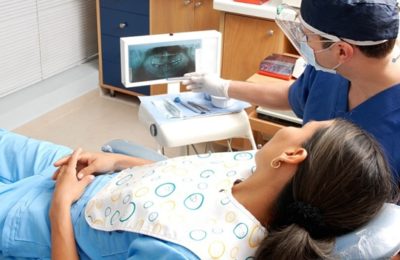Benign brain tumors are the group of rather contradictory medical conditions. On the one hand, they do not pose risk of cancer development, grow slowly, do not affect nearby tissues or metastasize. On the other hand, neoplasms near the brain vital centers can cause neurological deficit in case of growing. Each neoplasm inside the skull increases the intracranial pressure and can block the cerebrospinal fluid flow. In Germany, neurosurgeons pay special attention to precise diagnostics of benign tumors and look for the optimal ratio of risks and benefits during treatment of each patient.
Types of benign brain tumors
Each cell of the nervous system can give origin to benign neoplasm. Nevertheless, neurons themselves are less likely to originate a tumor, as they do not multiply. Other cells that are present in the nervous tissue are more active physiologically and thus can serve as the tumor basis.
Type of the progenitor cell determines location of the tumor, rate of its growth and hormonal activity, etc. The most widespread benign cerebral formations are:
- Meningioma accounts for almost 20% of all brain tumors. It arises from the brain meninges – the arachnoid mater, the dura mater, and the pia mater. The meninges cover brain and spinal cord, so meningiomas typically grow on their surface, without invading deeper layers. Size of the meningioma can potentially reach 2-5 cm. Development of meningiomas is strongly associated with the type 2 neurofibromatosis.
- Schwannoma or acoustic neuroma is the second most common neoplasm that accounts for up to 9% of brain tumors. It arises from Schwann cells of the 8th cranial nerve. Typically, Schwannomas do not spread along the nerve fiber. Increasing in size, they start affecting hearing and balance, along with facial sensitivity at the advanced stages. The tumor is also associated with the type 2 neurofibromatosis.
- Pituitary adenoma is neoplasia of the pituitary gland. It is rather widespread and accounts for up to 8% of brain neoplasms. In about 65% of cases the pituitary adenoma produces hormones and thus causes numerous symptoms. Typically, pituitary adenomas produce prolactin. More rare cases include production of adrenocorticotropin (ACTH), growth hormone (GH), and thyrotropin (TSH). There can be adenomas with mixed hormonal secretion, as well.
- Hemangioblastoma arises from the cerebral blood vessels and accounts for 2% of all cerebral tumors. Hemangioblastoma typically grows outside the brain tissue, in the meninges, but it can compress nervous tissue when it is large enough. A tumor can be solid or have form of a closed sac mass or a cyst. Hemangioblastomas development is strongly associated with von Hippel-Lindau syndrome.
- Craniopharyngioma is widespread in children, but can also be diagnosed in adults. It accounts for up to 1%-3% of all brain neoplasms. Craniopharyngioma arises from the remnants of Rathke’s pouch and is typically connected with abnormal development of a fetus in the uterus. Craniopharyngioma is called “a neoplasm with benign structure and malignant progression”, as it can potentially invade the surrounding structures and recur after the surgical removal.
- Choroid plexus papilloma is mainly a children’s disease that accounts for less than 1% of brain neoplasms. Despite slow growth, choroid plexus papilloma can block flow of the cerebrospinal fluid, which is regarded as the medical emergency. In addition, it has genetic background and may be connected with the mutation in gene TP53.
- Epidermoid and dermoid cysts are rare conditions. These are hollow cysts that can be filled with fluid. Epidermoid and dermoid cysts are regarded as the kind of benign tumors due to intracranial location and possible affection of the cerebral tissue.
Diagnostics of benign tumors of brain in Germany
The first step towards the correct diagnosis and therapy is attending a physician and undergoing the physical examination. Usually patients start from a general practitioner consultation, as benign brain tumors do not have specific symptoms. A healthcare professional should be qualified enough in order to make differential diagnosis and refer a patient to the neurologist and neurosurgeon.
List of procedures for the diagnostics of benign tumors of brain in Germany includes the following:
- MRI, including MRI with the intravenous gadolinium enhancement, diffusion weighted MRI, and functional MRI.
- Magnetic resonance spectroscopy.
- Tissue sampling that can be performed by means of the aspiration biopsy, stereotactic biopsy or surgical tumor removal.
Additional examinations that are administered in certain clinical cases include CT scan or PET-CT scan, cerebral angiogram, lumbar puncture, myelogram, electroencephalography and evoked potentials. Molecular testing of the tumor is performed for revealing the unique tumor markers.
Diagnostics and treatment in Germany with Booking Health
Patients often consider visiting Germany for the diagnosis making and the consequent therapy. This is quite natural, as only combination of the qualified healthcare professionals and availability of precise diagnostic examinations and state-of-art therapeutic techniques ensures the desirable result.
Those patients who want to avoid possible organization obstacles of receiving medical services abroad may use help of Booking Health. The certified medical tourism operator Booking Health offers assistance in such significant aspects, as:
- Choosing the best healthcare professional and clinic for your case.
- Booking an appointment or date of admission to the hospital.
- Elaborating and explaining the preliminary diagnostic and / or therapeutic program.
- Providing patient and his accompanying person with transfer, interpreter and medical coordinator.
- Receiving and translating all the medical reports and follow-up recommendations.
- Providing help in further treatment or neurological rehabilitation, if necessary.
- Arranging of follow-up tests and distant consultations with your physician.













